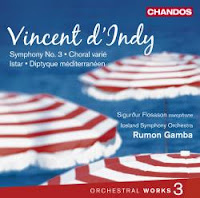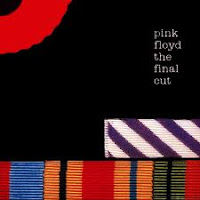
Florent Schmitt put me on track of Rimsky-Korsakov again. I've always been very fond of these LPs from the end of the vinyl era. These were excellent early digital Philips recordings which in an initial phase of my musical explorations provided access to the colourful and engaging work of a composer who - beyond the perennial favourite
Sheherazade - has been unjustly neglected. Another reason to revisit these recordings is the fact that I have been able to lay hands on a second hand but unused upgrade kit for my Michell Engineering Gyro SE turntable. The kit consists of a new
Never Connected power supply unit (PSU), which shields the turntable from mains pollution. Then there is also the hefty platter that comes with Michell's flagship model Orbe.
I started with the PSU which is easy to swap with the original unit. The difference was startling. Suddenly the music had more authority, more depth and a richer texture. I was truly amazed at the effect of this simple intervention, making me wonder what the effect of a separate power plant would be for all my hifi gear. So I proceeded to listen to some Rimsky pieces, enjoying the improvement brought by the power supply and holding off mounting the Orbe platter for the time being.
 Antar
Antar, Rimsky's Second Symphony (later re-classified by the composer as a symphonic suite) is not very well known and certainly not a staple of the concert repertoire as
Sheherazade has become. I have always loved this piece, particularly the first and last movements in which the composer conjures up the most beguiling, darkly-opulent palette. The music's attraction lies not in its contrapuntal cleverness but in its narrative fluidity and fantastic colours. Zinman's rendition with the Rotterdam PO has always given me total satisfaction. I have an alternative version on CD with Kitajenko conducting the Bergen Philharmonic (Chandos) which is very good to.
It's been ages since I heard the
Russian Easter Festival Overture (op. 36). I've never been that fond of the piece, which I found to be rather monotonous (poom pompom poom pompom poom). But hearing it on the Michell with the new PSU was an utter revelation. There was a spine-tingling wealth of orchestral detail that had escaped me before. But what really got me on the edge of my listening seat was the tremendous energy and authority of the music, with string lines majestically rising and falling, and trombones solemnly and eloquently intoning their hopeful messages. It was as if one was standing under the vaults of an Orthodox cathedral.
I had a similar experience with the beautiful suite of
Tsar Saltan, particularly in the second movement in which the Tsaritsa and her son finds themselves in a barrel on the high seas. Again the sweep of the string section and the thunderous percussion made my hairs stand on end. Amazing! It was as if the whole turntable setup was catapulted to an altogether different league of playback. The kind of rigidity I had always associated with the Goldring Eroica element was gone. Instead the sound was unrecognisably fluid and rich in texture.
Finally I listened to the fairly short
Legend of Sadko, an early piece (op. 5). It's a rather subdued work drenched in somber Wagnerian colours and featuring a lively trepak that doesn't quite break through. Again, the Philips LPs sounded marvelously evocative, particularly in the sparse orchestral flourishes.
I wondered then what the Orbe platter might add to this experience. So I proceeded to install it. Optically it certainly cuts a dashing figure. The big monolithic platter made the Michell look like a heavy weight. But soundwise I was quickly disappointed. It didn't take me more than 10 minutes to figure out that the platter did exactly the opposite of what one would expect. Rather than to keep the needle from diffusing kinetic energy to the acrylic material on which the vinyl disc is resting, it seemed to suck out the life of the music. The background was blacker, certainly, but together with those frequencies the music had lost of its liveliness. Contours were less sharp and the whole sound picture became muddier and less authoritative. Maybe I should have spent a good deal of time sticking a dampening material (DensoDamp) that comes with the kit to the underside of the turntable's chassis (a delicate operation that requires one to dismount the arm and turn the table on its head) but, honestly, I don't believe in it. If one has to take recourse to these kinds of rustic strategies, then in my opinion the platter's design is flawed to start with. Furthermore, reports on the net contradict one another. Some say it makes a difference, others say it doesn't. I think the disappointing performance is likely a result of a lot of factors interacting: the placement of the table, underground, the quality of the arm and element and the inevitable room-dependent variables. In any case, I was not convinced and quickly dismounted the Orbe platter. Putting the original SE type platter back on top immediately restored the state of audiophile bliss I had been enjoying. Soon I will upgrade from the Goldring Eroica to another MC element, namely the fabled Miyajima Shilabe. I will give the Orbe platter another try then. If it doesn't rise to the challenge I will proceed by selling the platter kit onwards.
 I discovered a potentially interesting dowload service in eClassical.com, ostensibly operating from Sweden. Pricing is per second so relatively short pieces can be had quite cheaply in 16-bit or 24-bit FLAC. The catalogue is still sparse, but with a selection of Chandos, BIS, BBC Legends and Da Capo albums, there is quite enough on offer.
I discovered a potentially interesting dowload service in eClassical.com, ostensibly operating from Sweden. Pricing is per second so relatively short pieces can be had quite cheaply in 16-bit or 24-bit FLAC. The catalogue is still sparse, but with a selection of Chandos, BIS, BBC Legends and Da Capo albums, there is quite enough on offer.
















